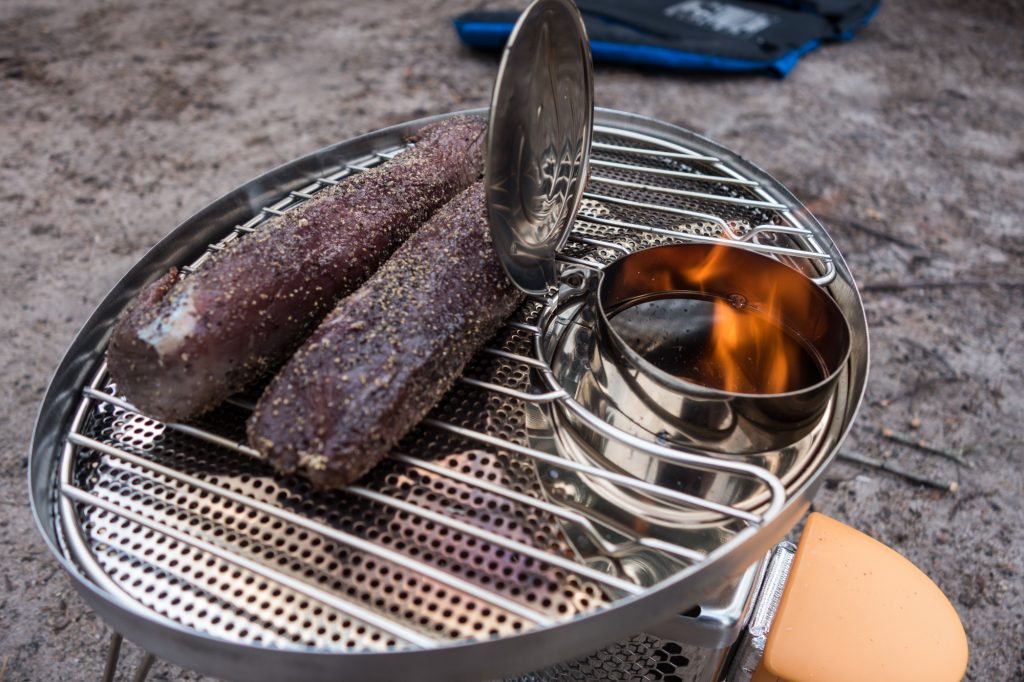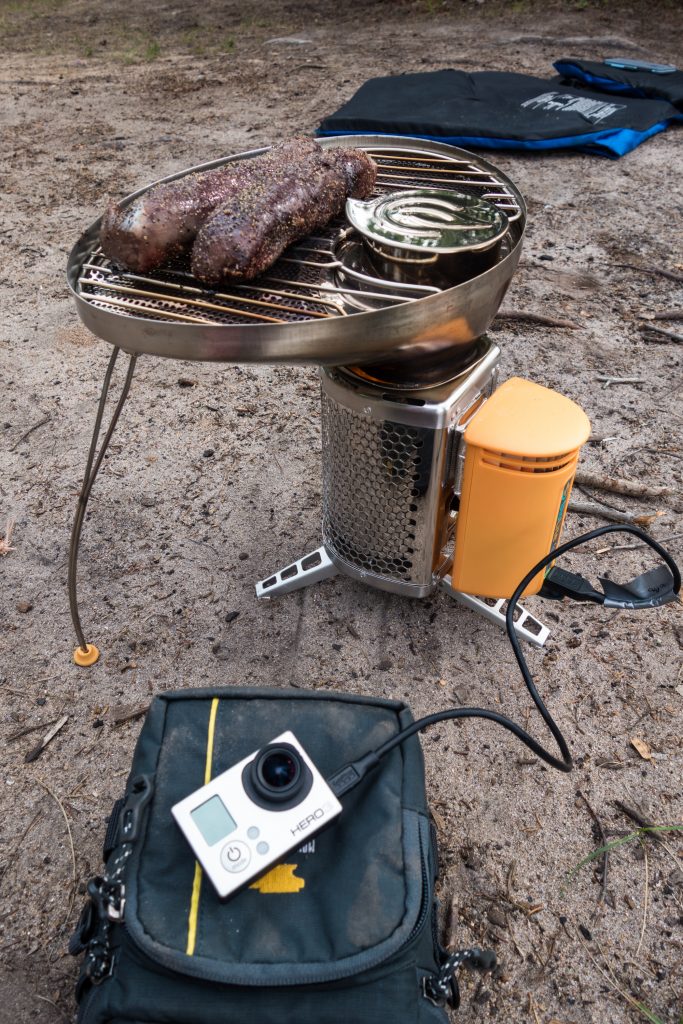I won’t sugarcoat it: I took a leap of faith in bringing my new Biolite Stove along for this weekend’s trip, and I was a little skeptical. But, in this sense, skeptical doesn’t just mean a little suspicious of whether not it will work. Instead, it meant I might not be eating until tomorrow. Sure, it was just a weekend overnight in the middle of the Adirondacks’ Cranberry Lake, not a weeklong bushwhack through Denali. I could survive 24 hours off the CLIF bars and saltwater taffy I brought along, but it wouldn’t be super pleasant.
I trust gas. It’s always there, until it’s not. It always works, unless it doesn’t. And, it’s harmless, unless you count the environment. O.K., so it’s not perfect, but it definitely gets the job done. A stove that runs on sticks? It wasn’t without a couple question marks.
What if there weren’t any sticks around? What if there weren’t enough? Could I really cook an entire venison steak with sticks? Oh yeah, I didn’t just bring soup or something simple. I went all in. But, what better way to test a stove than when you need it to cook a big slab of meat to avoid going hungry? The pressure was on.
How It Works
The Biolite CampStove Bundle includes everything you might need for a gourmet backcountry meal: The stove itself, a 1.5-liter pot, and a grill that sits overtop the stove. The stove itself is a marvel, one in which 21st-century tech meets serious backcountry utility. The main chamber is where your fire lives, and it’s also where you drop in your biomass fuel, such as sticks, pinecones, pellets, etc. The yellow power module, which mounts easily to the side when you extend the stove’s burly metal legs, has two functions: Fans inside of it push fresh air into the fuel chamber, continuously stoking the fire and keeping it ripping while simultaneously using the fire’s heat to both run the fan and send power to an external-facing USB jack. That means the material you’re using to cook your meal is also keeping itself hot and charging your phone while you’re at it.
The stove packs down inside of the pot to be about the same size as another stove, pot, and fuel canister, which means, as long as there’s fuel nearby and you don’t need to bring Biolite’s ultra-efficient Biofuel Pellets, you’re not sacrificing any weight or volume in your pack. And, for car camping or paddling trips like mine, tossing in the grill top (or pellets, if need be) is a no-brainer.

Putting It To The Test
Although it might not be as simple as turning a nob and lighting a match to get going, even those not the most fire-capable will be able to get the Biolite roaring. Having your sticks ready to go helps, but the fan stokes the flames quickly and gets them hot easily. In fact, just about everything was easier than I expected, from just finding enough sticks, to getting the stove ripping. With the heat so concentrated (way more than a campfire), it needs far less material to get to cook your food than you would think.
Boiling water or heating up anything else in the pot was a piece of cake, and when I threw the grill on top, dinner came out more gourmet than anything I’ve ever eaten in the woods. The entire surface got hot enough to cook my steak, and temperature regulation was as easy as adding or withholding burning material or adjusting the vent’s opening between the grill and stove. Bon appetit!
In addition to the cost savings of not needing to keep repurchasing white gas or IsoPro™ canisters, plus the bonus of being able to charge my phone, headlamp, or GPS while I cook, the Biolite’s true beauty lies in getting away from polluting petroleum and keeping fewer aluminum canisters out of landfills. It just feels good knowing my backcountry cooking is completely renewable—and it’s a whole lot more fun.

Ryan Wichelns
Ryan was goEast's only editor from its launch in 2016 until 2023. Now, he's the founding editor of Trails Magazine, the only print publication for backpackers and people who sleep in the dirt. When he's not wordsmithing, he's skiing, hiking, mountain biking, trail running, and more in Colorado's San Juan Mountains and beyond.




